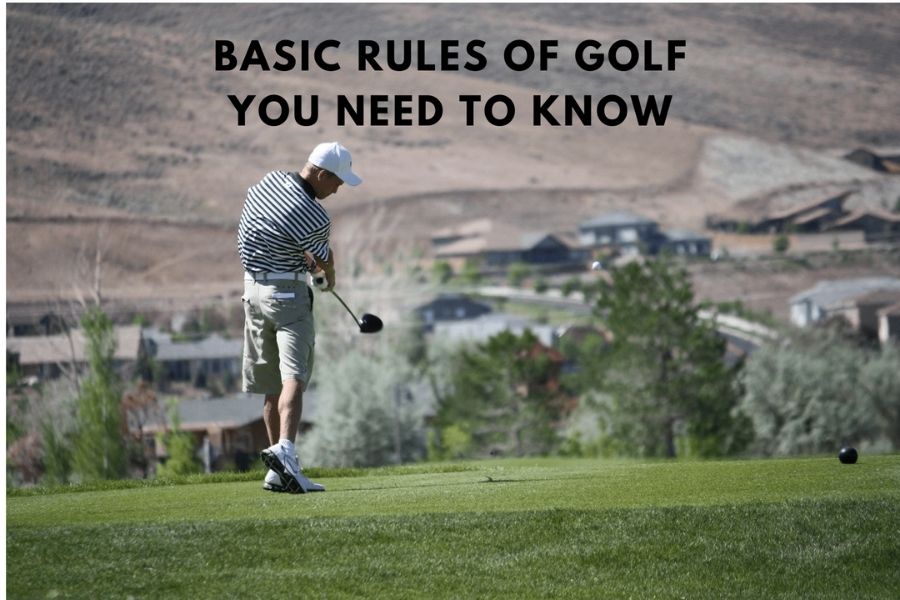Golf (also known as golfing or golf) is a sport that involves using clubs to hit a small ball from one location to another until the ball goes into a small hole in a different area of the course, all within a set number of strokes. After hitting the ball into the required number of holes (usually 18), the score is calculated. The fewer strokes taken, the higher the score.
Many historians believe that the region of Kelven in the Netherlands was the birthplace of the sport of golf, and the word “golf” is derived from the Dutch word “kolf.” In 1744, the world’s first golf club was established – The Gentlemen Golfers of Leith. This event was followed by the formation of the St. Andrews Society of Golfers in 1754. The principles of scoring were introduced in 1759, and by 1764, the 18-hole golf course became the standard.
Golf Course
To play golf, players need a vast expanse of grassland covering several hectares, with expensive grass varieties that are suitable and not altered to interfere with or change the force and direction of the shot. The golf course is designed to be beautiful, spacious, and serene.

A standard golf course consists of 18 holes, each with 3 types of holes: Par 3, Par 4, and Par 5. Each hole has various types of terrain, but they are typically categorized as follows:
- Tee: The starting point, usually flat.
- Fairway: The best part of the course, featuring short and smooth grass.
- Rough: The grass at the edges of the fairway, taller and thicker than the fairway grass.
- Medium Rough: Grass farther from the fairway, very thick, rough, tall, and tough.
- Weed Rough: Grass outside the fairway, very thick, tall, and tough.
- Unplayable: An area where you cannot hit the ball; you are penalized one stroke if you hit into it.
- Out of Bounds (OB): An area where you are not allowed to hit the ball; you are penalized two strokes if you hit into it.
Rules of Play
The rules of golf are intricate and tightly regulated by the Rules of Golf. Golfers must play their ball from the starting point (tee box) until it reaches the green. Each stroke of the ball is counted as one point. After that, players proceed to the next golf hole. A complete golf course consists of 18 holes, and players can play either one round (18 holes), half a round (9 holes), or two rounds (36 holes). After finishing the game, players tally their scores, with the lowest score winning.

A golf hole consists of several components, including:
- Tee Box: The starting area from which golfers hit their first shot (tee shot).
- Fairway: The portion of the hole between the tee box and the green. It’s typically well-maintained grass and serves as the main path to the hole.
- Bunker: Also known as sand traps, bunkers are areas filled with sand that are strategically placed to challenge golfers. Getting a ball out of a bunker can be challenging.
- Rough: The rough is the area outside of the fairway. It usually has longer and thicker grass, making it more challenging to play from.
- Lake: Bodies of water, such as lakes, ponds, or streams, are often used as hazards on golf courses. Hitting a ball into a lake can result in penalties.
- Green: The green is the finely manicured area surrounding the hole, where the flagstick is placed. Golfers aim to get the ball into the hole on the green in as few strokes as possible.
The layout of a golf course is designed to create challenges and obstacles for players, and many natural elements like trees, hills, and water bodies are strategically placed to come into play. Golf rules are strict and are aimed at adding strokes to a player’s score when they commit errors (penalties can range from 1 to 3 strokes, or even returning to the tee box, depending on the infraction).
Duncan Forbes established the rules of the golf club, and here are the key rules he put in place:
- You must tee off within the length of a club from the hole.
- The tee must be on the ground.
- You may not change the position of the ball once you have teed off.
- You may not move anything lying beyond the length of a club.
- If your ball falls into water, you must replace it behind the water hazard and play it with any club you choose.
- If you lose your ball, for any reason, or if anyone else should play your ball, you must return to the spot where you struck the ball and drop it on the ground, then play it again.
- No one is allowed to count a score in a match unless witnessed.
- If a ball is stopped by anyone, horse, dog, or anything else, it shall be played from where it lies.
- If your club is broken for any reason, it is considered out of play, and you are not allowed to replace it.
- The player whose ball is farthest from the hole must play first.

Golf rules have not changed significantly since then, and they still serve as the fundamental basis for international competitions. There are three basic types of golf clubs used for hitting the ball:
- Woods: Often denoted as “W,” these clubs are designed for long-distance shots and are typically used for teeing off.
- Irons: Denoted as “I,” these clubs are versatile and are used for medium-range shots, often from the fairway.
- Putters: Denoted as “P,” these clubs are used for short, precise strokes on the green to putt the ball into the hole.
Each golf club has a unique designation, such as 2W, 3W, 6I, 8I, P, with lower numbers indicating longer distances. The most powerful club is often referred to as a “1-wood” or “Driver.” Each club has a specified range, measured in yards, and it’s important to select the appropriate club based on both the actual distance required and your own strength and skill level.
Scoring Method
The standard in golf is the number of clubs specified for a hole from the club used for the tee-off to the club that gets the ball in the hole.
For example, if a hole has a standard of 4 clubs, you must try to get the ball into the hole within 4 clubs.
If you achieve this, you will score a “Par.” If you use one club less, meaning you only need 3 clubs to get the ball into the hole, you score a “Birdie,” which is -1 points; if you use two clubs less, you score an “Eagle,” which is -2 points.
Conversely, if it takes you 5 clubs to get the ball into the hole, meaning more than 1 club over par, you score a “Bogey,” which is +1 point.
The results for all the holes are added together. After completing all 18 or 36 holes, the player with the highest negative score wins the game.
I hope that the information about golf rules provided here will help you feel more confident as you begin to practice and play this “gentleman’s sport.” In addition to this introductory information, you will also need to further your knowledge on various aspects of the game, from basic to advanced techniques such as grip, tee-off, and more, in order to master the fairways and achieve the highest scores possible.
